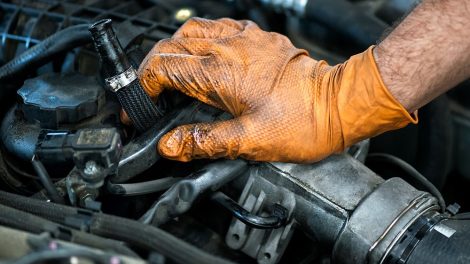In high-performance and motorsport applications, fuel system integrity is paramount. PTFE fuel hoses have emerged as a preferred choice for their exceptional chemical resistance, temperature tolerance, and durability.
However, their performance in high-vibration automotive environments requires careful consideration.
Advantages of PTFE Fuel Hoses
1. Chemical and Temperature Resistance
PTFE hoses are chemically inert, making them resistant to a wide range of automotive fuels, including ethanol-blended fuels, methanol, and gasoline. They can withstand temperatures ranging from -76°F to 446°F, ensuring reliable performance in extreme conditions.
2. Low Permeability
The dense structure of PTFE prevents fuel vapors from permeating through the hose walls, reducing the risk of fuel odors and enhancing safety.
3. Durability and Longevity
PTFE hoses are designed to endure harsh environments, offering extended service life compared to traditional rubber hoses. Their resistance to abrasion and chemical degradation contributes to their durability.
Challenges in High-Vibration Environments
1. Reduced Flexibility
While PTFE hoses are robust, they are less flexible than rubber hoses. This reduced flexibility can make installation in tight or complex configurations more challenging, especially in high-vibration areas where movement is constant.
2. Potential for Increased Noise, Vibration, and Harshness (NVH)
The stainless steel braid reinforcement in PTFE hoses can transmit vibrations, potentially increasing NVH levels in the vehicle. This is a critical consideration in applications where comfort and noise levels are a priority.
3. Installation Complexity
Due to their rigidity, PTFE hoses may require specialized fittings and installation techniques. Improper installation can lead to stress concentrations, increasing the risk of hose failure in high-vibration conditions.
Best Practices for Utilizing PTFE Fuel Hoses
1. Use of Convoluted or Corrugated Designs
Opting for PTFE hoses with convoluted or corrugated designs can enhance flexibility, allowing the hose to absorb vibrations and reduce stress on the fuel system components.
2. Proper Routing and Secure Mounting
Carefully routing PTFE hoses to avoid sharp bends and securing them with appropriate brackets can minimize movement and reduce the risk of damage due to vibrations.
3. Regular Maintenance and Inspection
Regularly inspecting PTFE hoses for signs of wear, abrasion, or damage is crucial. Early detection of issues can prevent catastrophic failures in high-vibration environments.
Conclusion
PTFE fuel hoses offer significant advantages in high-performance automotive applications, particularly in terms of chemical resistance and durability. However, their performance in high-vibration environments necessitates careful consideration of their installation and maintenance.








